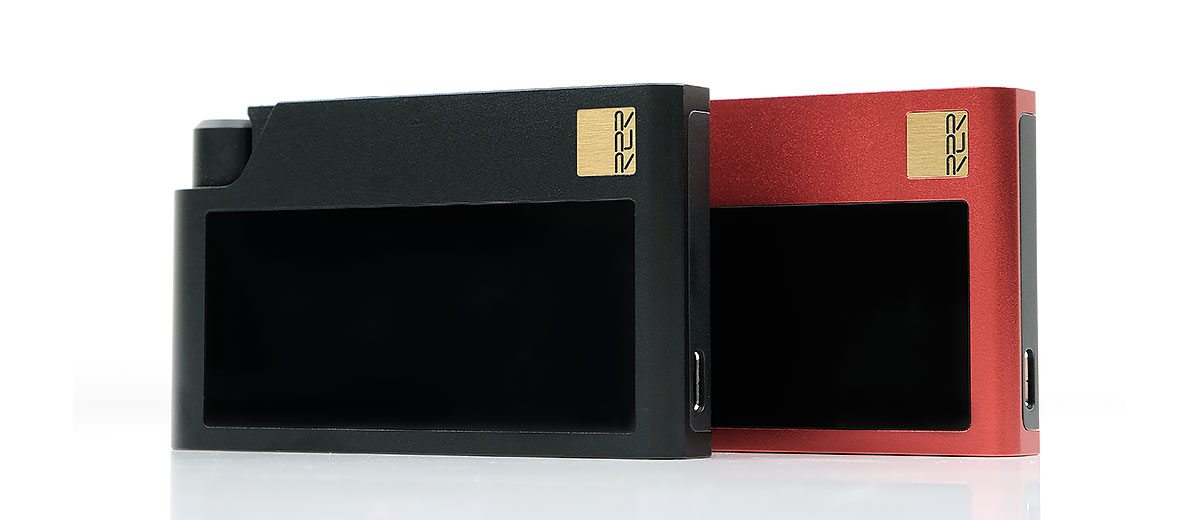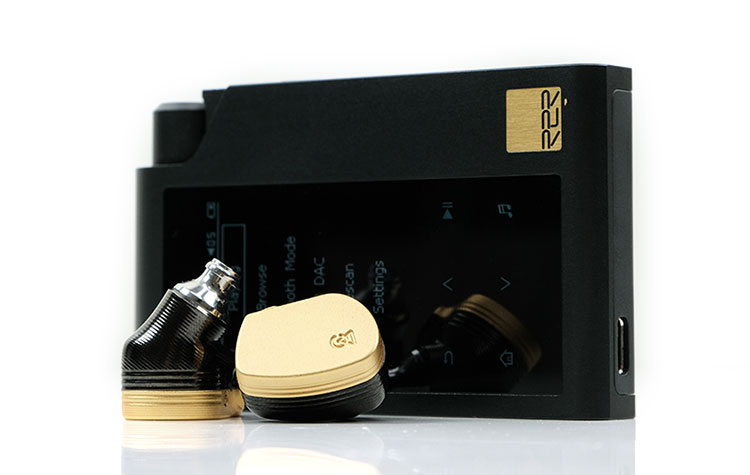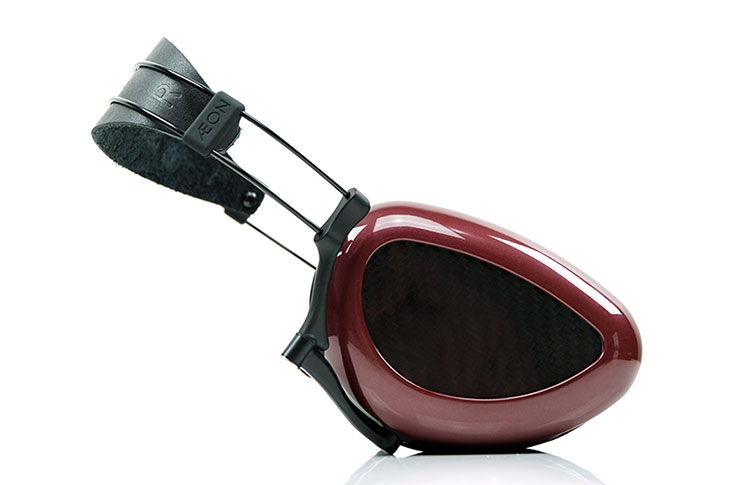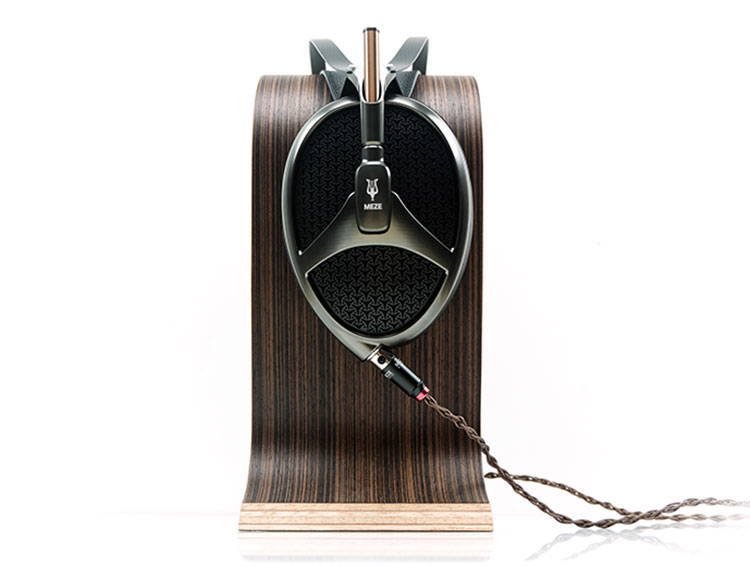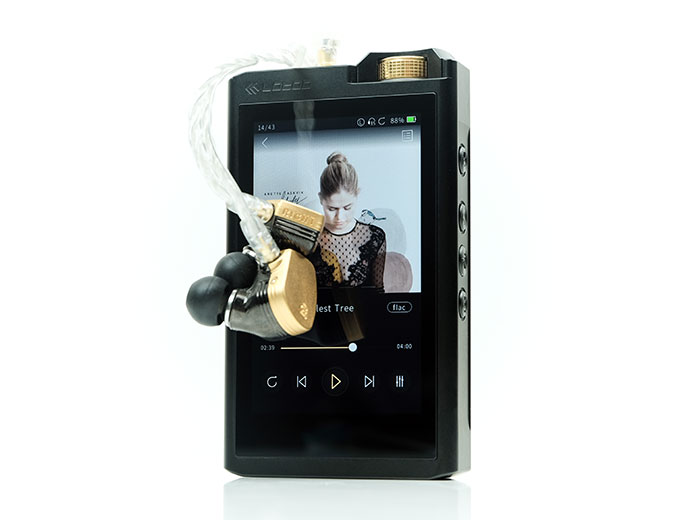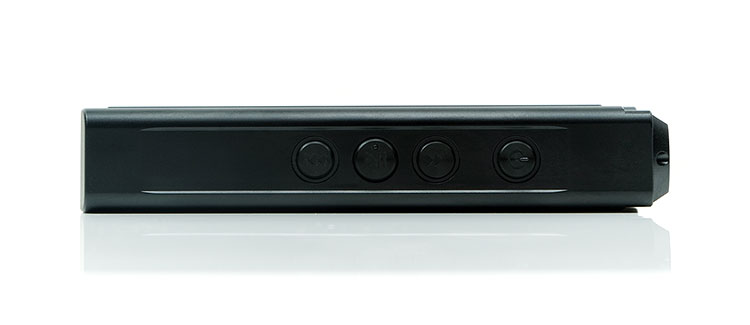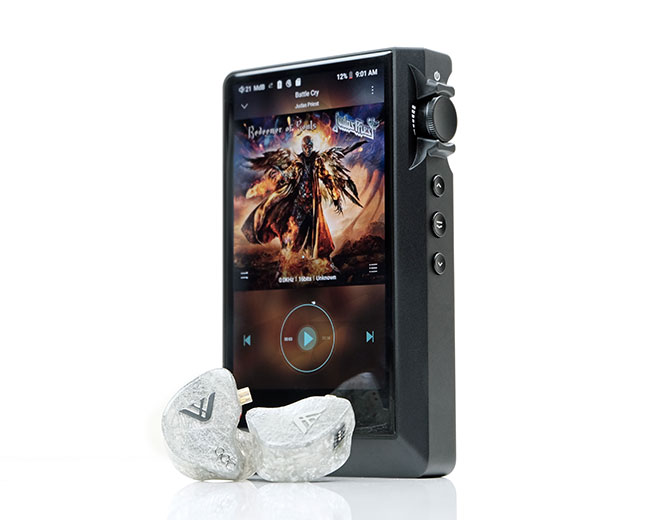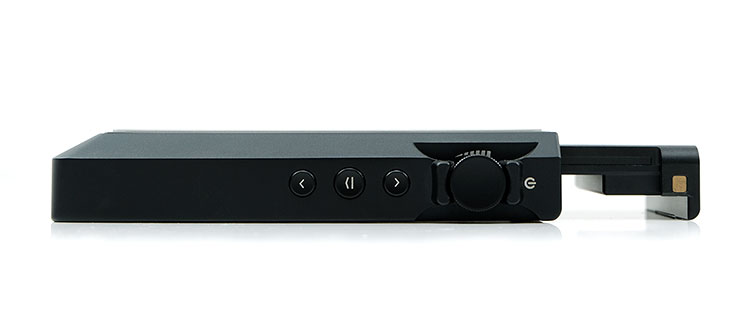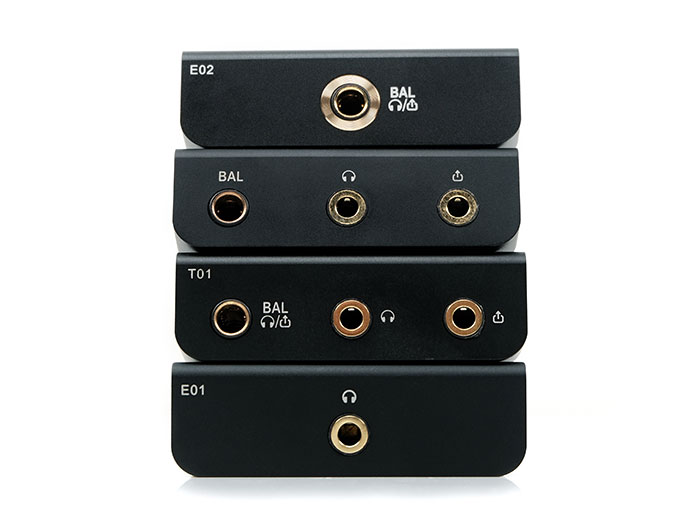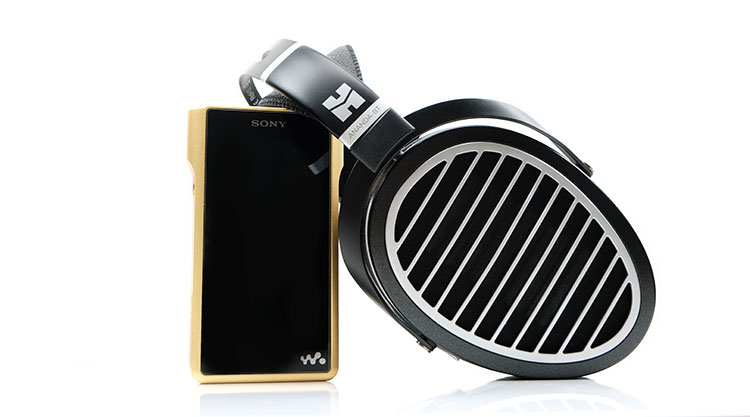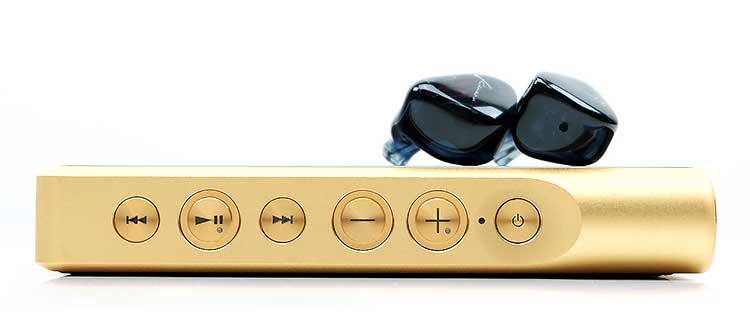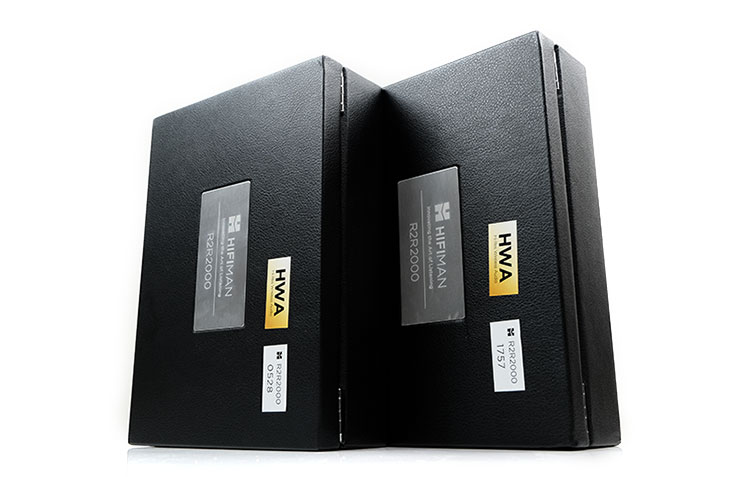Synergy
Sensitivity
Both R2R2000 versions will offer up to 500mW balanced and both are advertised as being capable of the same output power. Unbalanced power with load ratings are not advertised but on checking its around 320mW and I presume into a load of 32Ω.
The key to IEM pairing for both is the gain setting and ironically, the balanced output option is better for sensitive IEMs than the unbalanced output.
This is primarily due to the super low-gain option on the 4.4mm sub-menu that is not available on the 3.5mm output gain sub-menu. With the 4.4mm super low-gain option I get a much blacker background from sensitive IEMs as well as a lot more useable volume control.
Via the 3.5mm output, both units show off some background noise with super sensitive IEMs such as the Campfire Audio Solaris and Empire ear’s Zeus. You may need something like iFi Audio’s iEMatch for the 3.5mm option to get that black background. It does a good job of reducing hiss as well as lowering the gain level which can be a boon for volume control.
With both on low-gain, I found both units to be rather quiet and well behaved with more demanding monitors such as the 64 Audio tia Trio and Vision ears’ Elysium which have lower SPL ratings.
IEM Pairings
Campfire Audio’s Solaris SE was an interesting first comparison and there does seem to be the guts of an impedance debate here when using super low-gain as it tended to sound a little flat with less low-end emphasis compared to the low-gain setting.
Of course, with the low-gain setting, the noise floor becomes a little too high so you will need an iEMatch here to balance it out. With iEMatch and a little current adjustment, it did sound more aggressive with a better low-end response.
64 Audio’s tia Trio was almost the perfect monitor match with its higher impedance rating and 104dB SPL which will quite happily work of low-gain 3.5 or 4.4mm from either the Red or Black unit. The black background is excellent as is the amount of useable current or volume.
The low-end is strong, powerful, and beautifully defined on the Black unit which was my preferred pairing with the tia Trio. The low-end does reach a lot deeper than the Solaris SE when paired on the same Black R2R2000 gain setting.
With AAW’s Halcyon, I stuck with the Black version. Both units offer very low noise floors with this hybrid monitor on low-gain 4.4mm balanced.
The Red R2R2000 does very well with the highs giving it a nice smooth liquid response but the better low-end separation and power of the Black carried me a bit more. The dynamic range of the Red R2R2000 just felt a little more restrictive with more bloom on fast-hitting low-end notes.
Power
Both units have a 500mW into a 32Ω load rating which places it around the 2nd tier pack of portable sources for balanced output power. The likes of the FiiO M15 will give you more at 800mW into 32Ω so you will get a little more in terms of optimal levels for the most demanding of headphones, i.e. well below 100dB SPL.
The R2R2000 is running there, or thereabouts, with the likes of the Cayin A01 and T01 motherboards for the N6ii which are rated at 530mW balanced into the same load and double the power of the E01 motherboard which is single-ended only.
The balanced 4.4mm E02 does have more headroom at 630mW but it is not a huge gap between it and the R2R2000 performance. Particularly with modern planar such as the Empyrean and Final D8000 Pro at 31.6Ω /100dB and 98dB SPL/60Ω respectively.
You also have the same output rating balanced as the Lotoo PAW Gold Touch which is 500mW into 32Ω so either way, the two units are competitive for headphone use.
Headphone Pairings
However, I do not wish to give off the impression that ‘balanced output to headphones’ is an arbitrary pairing because the single-ended is still quite an able performer.
Hifiman Deva
For example, Hifiman’s own Deva, their new entry-level planar headphone is rated at just 18Ω and 93.5dB SPL so not exactly the most agile of performers for current and the cable it comes with is single-ended.
With the R2R2000 combo, you do have more than just a fixed gain single-ended gain output. You can opt for a low or high gain as well as 3.5mm balanced if you are lucky enough to have a cable fitted for that. Even if you do not you do get in gain by moving from low to balanced but the better option is the high-gain setting for the Deva which will offer decent headroom and volume.
The better pairing for the Deva in terms of synergy is the Red R2R2000. Quite apart from the price saving, its smoother character balances out the Deva’s airy and drier sound very nicely indeed.
I never got a feeling I was losing out on potential detail nor did the staging sound cramped with this pairing. To be honest the sound was very smooth yet articulate at the same time. Any male vocal performance, particularly crooners like Sinatra and Julio Iglesias, sounded effortless.
Dan Clark Audio AEON 2
Power is not a huge issue either on Dan Clark Audio’s open and closed AEON 2 headphones but for synergy, I preferred the more expensive Black edition R2R2000 for the more precise and spacious soundstage, something which the AEON 2 headphones benefit from.
They do scale quite well, however, so going balanced is optimal for me but it will not fall like a deck of cards single-ended either using high-gain.
The detail and vivid mids performance from this pairing was among the best I have heard for the AEON 2 pairings to date. They also sound wonderfully natural and easy to listen despite the open AEON 2 Flow edition having a more excitable upper mids than the closed version.
This pairing does not lack in texture one bit right up to higher pitching percussion passages where you think it might get peaky, it does not.
Meze Empyrean
The Black R2R2000 has the edge here with the Empyrean, especially if you are using the velour pad combination. The Red R2R2000 keeps it quite smooth but that has never been a problem with the Empyrean which is quite a smooth sounding headphone experience, to begin with.
Rather it is the superior separation and better staging capability of the R2R2000 Black over the more laid-back performance of the Red that has been veering to it for pairing with the Empyrean. The leather pads of the Empyrean class the gap a little since they are the more neutral of the two pads but with warmer and more laid-back velour pads it has to be the Black R2R2000.
Wired Performance
OTG
A very satisfying OTG pairing experience. Not least because both are plug and play and presented no handshake issues with my smartphones but also that compact size and 142g weight makes the R2R2000 a breeze to stack with a phone.
All streaming platforms and local Android apps worked just fine with the R2R2000 via OTG but bear in mind, much like Bluetooth and USB-DAC features you do need to turn the eco-mode off for them to work and that will mean a vastly shorter battery life.
One caveat to watch out for is when you detach the OTG cable from the source and reach again. You will need to come out of the USB-DAC mode and restart it on the R2R2000 or else it will not pick up on the source audio.
One other quirk is using OTG then switching to BT or local playback right after. I tried this a few times and after turning off OTG (USB-DAC mobile/tablet) and turning on BT and connecting to the same phone and playing the same track the R2R2000 was devoid of audio.
The same was true of playing locally stored files. Only when I rebooted did the system return to normal playback for BT and local storage.
USB-DAC
For PCs without the universal USB 2.0 driver, you can download an R2R2000 USB-DAC driver and install it to give you the same level of functionality. Otherwise, for the latest Windows Edition and MAC, both R2R2000 units are plug and play.
Note, due to decoding limitations you will not be able to sample at 32BIT no do you have access to MQA as there is no native MQA unfolding. Rendering will be done on the software side, most likely to FLAC equivalent if ROON/TIDAL. Software such as Foobar will need to drop down to 24BIT also for playback.
DSD up to DSD64 worked as expected on JRiver’s Media Player and actually, DSD256 tracks were playable though I suspect converted to PCM on the fly. Sadly, neither R2R2000 USB-DAC LCD interfaces have a bitrate and sample rate indicator to know if the sample audio received is PCM or DSD native playback.
Wireless Performance
Pairing
Pairing is a breeze though I had to be careful as to which one was Red or Black as they used forgettable serial numbers to distinguish the two. If you are only buying one then it is not an issue, they will pair fast with smartphones and laptops and be ready to receive right away.
From there you can pretty much stream with ease on TIDAL, Spotify from either laptop or phone but with one caveat – in SBC or AAC only.
Stability
The problem here is the use of the HWA or LHDC protocol instead of LDAC, which I presume is due to the certification process not yet being complete with Sony. I was confident that my Huawei P20 would pick up on the LHDC/HWA option but sadly it stayed at SBC with HWA greyed out. The same also with my Samsung Note 9, just SBC.
The one ironic exception to this was a pairing with the FiiO M15 whose app, (and hardware), is set up to transmit HWA and it did work once, but once only. The second time around it did not show the HWA logo in the top corner of the M15 Android notifications bar.
I did get an LHDC or HWA connection with the HiBy R6 Pro and the Hiby app but sadly the signal was really unstable. Turning it off immediately improved the connection. Hifiman’s own app is supposed to transmit using LHDC but I am entirely sure if that was the case since I saw no handshake between it and the R2R2000 in the information option on the main menu.
Does it sound poor with SBC? Absolutely not, way better than most, if not all TWS I have tried so I would not let that put you off. Rather it is a missed opportunity and I do hope LDAC does get approved for these devices since they are being pitched as BT streamers.
Range
Sadly, on the weak side with 10m possible with a smartphone but with a lot of signal instability and dropouts. It is good for about 5m with one wall in between the smartphone and either of the 2 R2R2000 units.
You can get to 10m with a lower codec such as Spotify streaming whereas TIDAL (Master) was spotty beyond 5-6m. However, even with a lossy data stream, the stability was patchy at 10m.
I had no signal issues within that 5m range so if you are going to use it as a BT streamer it is ideal to have source and R2R2000 receive within the same room or relatively close to each other.
Latency
I actually felt the latency performance on a Windows 10 laptop using hi-res media files to be quite good. Not 0.0s tight using VLC but a lot tighter than TWS units outside of the Sony WF-1000XM3 and Sennheiser’s Momentum True Wireless.
That being said, the Hifiman Ananda BT was the stronger performer for media on laptops with a tighter audio synch performance and seems the more sensible choice unless you have a preferred headphone or IEM you prefer to use.
Select Comparisons
(Setup – 64 Audio tia Trio with foam tips and an Effect Audio Code 51 cable. The same resolution files and tracks were used on all devices).
Lotoo PAW Gold Touch
$3199
DAC
The PAW Gold Touch is our highest scoring DAP reviewed to date and the flagship of the Lotoo range.
The Touch uses a delta-sigma single AKM AK4497EQ which does not have the pedigree of the PCM1704K but it is very nicely implemented by Lotoo with their triple CPU setup covering wireless. This includes an Ingenic X1000, Freescale i.MX6 for the digital subsystem as well as a BlackfinDFX7XX DSP for an audio subsystem.
Aside from the AK4497EQ, Lotoo has also implemented an AK4137EQ digital sample rate converter (SRC) chip allowing the user to upsample tracks up to 768kHZ which is similar to how Hifiman have setup the R2R2000 with their FPGA digital filter system with matching upsampling rates.
The Touch is a more capable decoding platform than the R2R2000 with up to 32BIt/384kHz PCM and DSD512 compared to just 24BIT/192kHz local and 24BIT/384kHz, DSD64 via it USB DAC. That is really not surprising given the age difference between the two chipsets.
For BT both are capable but the Touch can receive and transmit the same time whereas the R2R2000 can only receive. That being said, the Touch transmitting module is very weak for me on TWS. Both will work fine for OTG digital audio.
Amp
Amplification power is similar actually with 500mW balanced for both units under a 32Ω load. However, the Touch retains that 500mW for unbalanced whereas the R2R2000 drops down to 320mW for the same load. The Touch also has a line-out for both balanced and unbalanced whereas the R2R2000 does not.
The Touch is the more capable performer for SNR and THD=N and you will find it has a much blacker background for sensitive IEMs with an SNR of a good 8-12dB higher.
Design & Features
The Touch is by far the bigger and heavier device at 311g compared to just 142gh for the R2R2000. Battery life on the Touch is nowhere near as good as the R2R2000 on eco mode at just 8-9 hours compared to 20-30 hours. However, on HiFi mode, the R2R2000 is the same spec at 8 hours though expect a lot less in real-world testing.
Both devices have their own proprietary OS and both do not have apps compatibility either. That being said, in most every dept the Touch is the more complete portable device experience. Combined with a much larger IPS panel that is GUI capable the OS experience is the more pleasurable of the two to use.
For example, PMEQ and EQ options, XRC, digital filters, OTA updates, LO/PO switching, DSD gain controls, lyrics reader, and playback instant preset EQ selectors. That is plenty to work on with bigger and easier to read screen to read.
Memory is a double-edged sword here. The Touch can hold and read more files than the R2R2000, however, it uses the larger SD format whereas the R2R2000 opts for microSD cards which I much prefer due to the wider compatibility with other devices in the office.
Tuning
Comparing these two is a bit like analog versus digital or a really good record player versus a CD recording. On the CD side you have the Lotoo, technically more resolving, more linear in its presentation, and with a bit more staging width also. You could argue its transient response, blacker background, and ability to articulate precisely is at a slightly higher level, at least for me.
On the other hand, you have the verve or PRaT of the Black R2R2000. It reaches deeper, sounds the more impactful of the two, and pushes forward a more vivid and engaging presentation. It sounds relatively analog with a slightly sweeter timbre and perhaps even more lifelike in its delivery. This is especially so for vocals and upper mids which have a slight push for better presence.
By contrast, the Lotoo is more controlled in the midrange with the treble getting a shade more energy but not by a huge amount. It is a modern reference sound with excellent separation, the superior dynamic range performer at times but still true to that core AK4497EQ sound that I tend to find does not grab you by the ‘cahonies’ quite like how the PCM1704K does it.
Much of that has to do with the R2R2000’s low-end which it the more physical and powerful of the two signatures. You can hear a little more sub-bass density right at the very low-end and that delivers a more powerful bass fundamental into the tia Trio’s instrumental timbre compared to the Lotoo’s neutral tuning. ‘With more authority’ is an apt phrase here.
Combine that with a more vivid vocal delivery and a treble which has a shade more sparkle and I daresay the timbre on the R2R2000 is the more impressive and engaging of the two players.
One addendum though, and this is to go balanced on the R2R2000 when comparing to the Lotoo. Unbalanced just lack a little ‘oomph’ for me compared to the balanced output and that is the key difference between these two players.
Cayin N6ii
$1299
Technical
For this, we go stock with the A01 initially but we may throw in some examples of the E01 or E02 as we look at the tuning side. We will be sizing these up primarily against the R2R2000 Red because of the target sound profile both are after which is organic and slightly to the warm side.
The A01 and the T01 motherboards do have both 4.4mm and 3.5mm which also makes it easier for a like for like comparison. The E01 and E02 motherboards have better DACs with an ES9038PRO and dual ES9038Q2M respectively but do cost a fair bit more. All DAC motherboards are delta-sigma designs whereas the R2R2000 is an R2R multibit configuration.
DAC
Inside the stock N6ii, the A01 uses a single AKM AK4497 DAC chipset and four OPA1622’s in parallel offering up to 245mW into 32Ω unbalanced and 530mW balanced. This is ranged against the R2R2000 which uses a dual PCM1702 implementation and an opamp build that offers 500mW and 320mW into similar loads balanced and unbalanced.
In terms of decoding, the N6ii is more complete with 32BIT/384kHz, however, for the A01 the headline figure is slightly misleading. The R2R2000 is capable of 24/384kHz PCM whereas the A01 will only deliver 24BIt/192kHz.
The T01 is even lower at 24BIT/192kHz though this is also for local playback whereas the R2R2000 drops to 24BIT/96kHz for local file playback in PCM mode. All motherboards for the N6ii will outperform the R2R2000 for DSD at up to DSD256 compared to just DSD64 for the R2R2000.
Both can offer BT though, as with the Touch, the N6ii can transmit as well as receive whereas the R2R2000 can only receive.
Amplifier
Ultimately this depends on the card you use. The A01 has a similar power rating at 530mW balanced but a lower unbalanced at 245mW into a 32Ω load compared to the R2R2000’s 500mW and 32omW respective numbers.
The A01 is more ideal for sensitive IEMs. The T01 will be in the same ballpark as the A01 with a balanced 4.4mm output of 530mW on a 32Ω load and 245mW for the same load unbalanced.
The E01 is unbalanced only whereas the E02 is balanced 4.4mm only though the E01 uses that Class A and Class AB dual operational mode.
The E01 is the weaker of the two compared to the R2R2000 with the Class A up to 105mW into 32Ω and Class AB up to 150mW into 32Ω. The R2R2000’s unbalanced 320mW will drive some cans and demanding IEMs whereas the E01 is more suited to sensitive IEMs.
The E02 is a little bit more powerful than the R2R2000’s balanced output at 630mW into a 32ohm load compared to the 500mW of the R2R2000. More power does not mean more noise either as you will find the E02 to be quieter with sensitive IEMs compared to the R2R2000.
Design & Features
The N6ii, with any motherboard, is the bigger and heavier of the two devices at 290g compared to 142g. However, much like the Lotoo, you are getting a lot more in the device in terms of features and functionality.
You get Android, apps compatibility, onboard storage, no file limits, OTA firmware update, a full WiFi experience to stream direct as well as LDAC BT to compete with the R2R2000. You also get a line-out capability though not a true line out, I²S, and coaxial connectivity which the R2R2000 does not have.
On top of that, you get a respectably large 720p 4.2″ multi-point capacitive Sharp IPS panel which towers over the R2R2000 black and white line and text smaller non-touch screen.
Both have OTG capability though the R2R2000 does benefit from not needing any specific configuration as Cayin has activated additional USB pins that make OTG cable pairing not so straight forward. The two devices also have USB-DAC capability for PC and MAC pairing.
Battery life depends on the mode or motherboard. The T01 card is on par with the R2R2000 8-hour HiFi mode whereas the A01 is way beyond at around 13 hours which can only be matched or beaten by the R2R2000 on eco mode.
Both the E01 and E02 cards reduce the N6ii battery life to just slightly above the R2R2000 HiFi mode at around 7-9.5 hours and nowhere near the eco-mode 20-30 hours.
A01 Tuning
The A01 motherboard is aiming for common ground with the Red R2R2000 with a warm and relaxed sound but in this case, the dynamic range is not on par with the R2R2000 sounding too controlled or a little flat.
The key reason for that is how both work the low-end, with the R2R2000 sounding cleaner but also more powerful with more sub-bass reach. The A01 has equivalent levels of warmth but its sub-bass is a bit lacking so it comes across as softer or with less definition.
Both have a relaxed treble performance overall but the R2R2000’s is slightly less relaxed so you get a little more contrast in the timbre creeping. That helps with the perceived headroom, particularly with percussion and vocals which have a little more room to breathe.
T01 Tuning
The T01 is a different proposition and a more competitive choice compared to the Red R2R2000. It is a little brighter on the top and has less low-end depth and power so slightly less PRaT and a weaker fundamental for lower pitching instruments.
However, it sounds airier and cleaner from the mids upwards with more headroom. Vocals have more presence and percussion has a bit more bite. Sibilance can be more of a factor on the T01, however. Staging is also taller and wider than the Red R2R2000.
With the Red, your ear is going to be pulled further down for the better low-end texture and more rounded instrumental and vocal tuning. With the T01 it is going to drift upwards for the cleaner sound and the better treble presence.
E01 Tuning
The Class A tuning is like honey compared to the R2R2000 Red tuning with an even sweeter instrumental and vocal timbre. However, it is also much more laid back both in terms of positioning of instruments and vocals as well as bass/treble slam and brilliance. Relaxed is the operative word here like a fine SET amp.
The Red R2R2000 has a more forward and powerful sounding bass delivery with a better sub-bass presence. It adds an additional element to its staging producing a more holographic experience whereas the Class A E01 is a more typical stereo speaker style setup.
The Class AB option brings the N6ii closer to the Red R2R2000 sound but there are a few detectable differences. The treble is still a little more forward as is the mids in general on the Red so vocals have a little more odd-harmonic infusion than the more liquid Class AB signature. Both sound very organic and euphonic to me but the Red has a shade less in the mids.
Bass on the Red is a little heavier than the Class AB and combined with the more forward treble and mids it can sound the peppier of the two with EDM and dance music.
E02 Tuning
The E02 follows a similar path to the Class AB of the E01 when compared to the Red R2R2000 only this time you have a wider soundstage and a more competitive level of instrumental separation.
Where the big differences are, it is still the same. A slightly weightier low-end on the Red and a bit more treble presence producing a marginally cleaner timbre in the upper-mids. The Red is closer sounding, perhaps more aggressive around sub-100Hz as well as around 4-5k.
The E02 pushes out that wider soundstage and you can hear that with imaging cues such as harmonized backing vocals which have a bit more substance to them compared to the more center focused R2R2000.
However, the E02 rolls-off gently on the sub-bass and places a bit more emphasis on getting some nice detail into male vocal texture around 1k. Percussion is also a little wetter on the E02 and a shade lighter and cleaner on the Red R2R2000.
Sony NW-WM1Z
$3199
Technical
With the 1Z we will compare with the Black R2R2000 since both are flagships in their respective range. The Sony DAP is perhaps a bit on the old side but it still holds up extremely well and to date, Sony has not replaced it.
DAC
Inside, Sony has gone proprietary with their own S-Master HX system compared to the R2R multibit PCM1704K of the R2R2000. Both are very different implementations with some quirks. For instance, the 1Z will happily decode DSD up to 256 and PCM 384kHz/32bit.
However, native DSD decoding is only via the balanced output where going unbalanced will have it converted to PCM. The R2R2000 will natively decode only up to DSD64 and 24BIT/384kHz but will deliver it to both outputs.
Much of this has to do with the use of a digital amplifier design of the 1Z and how Sony, by opting at keeping the signal in the digital domain right up to the LPF, has shaped what each output will do. Clearly by not allowing native DSD and a lower amp output for 3.5mm they have gone for better battery life.
Both devices can receive a BT signal, however, Sony can transmit also at up to LDAC, and out of most DAPs I have tried I have found it to be one of the more consistent BT experiences with connected devices.
Amplifier
However, for me, the R2R2000 amplification is superior for headphones and demanding IEMs with up to 500mW balanced and 320mW balanced into a 32Ω load. The 1Z is much the weaker at 250mW balanced and 60mW unbalanced per channel and that is on an even lighter 16Ω load.
If you are thinking well, that’s great because the 1Z will be quite, then that is not always the case with the Sony player. It can emit noise and background hiss on sensitive IEMs though not to the same level as the R2R2000 and its current control is smoother.
Design
The 1Z, beautifully designed it maybe is nevertheless a brick. There is no getting around that at 455g compared to just 142g for the R2R2000. Much of that weight is from the gold-plated oxygen-free copper chassis that is also very striking looking. Still, if you want something genuinely pocketable, the R2R2000 is the way to go.
I would not call the 854 x 480 FWVGA panel top-tier on the Sony these days but it is much more useable and touch-friendly than the tiny R2R2000 black and white screen and separate touch control system. You will find far less scrolling and faster menu navigation on the proprietary Sony OS compared to the Hifiman OS with the difference in screen size.
Both have 4.4mm balanced and 3.5mm unbalanced as well as digital I/O for USB-DAC but I much prefer the R2R2000 USB-C universal connector to Sony’s fussy 30-pin proprietary interface. Neither device has a line-out though Sony argues its amplification design means it does not need one. I do not really agree with that personally.
The battery life of 1Z is probably one of the best in the business at this level with up to 30 hours, even with hi-res playback. the R2R2000 can get close on eco-mode but with that comes no USB-DAC or BT functionality. Once you flip on HiFi mode on the R2R2000 you are nowhere near the level of the 1Z.
OS
Both have a proprietary OS and whilst I think the Lotoo OS is better than the Sony version, it is a considerably more matured system than the simpler Hifiman OS.
You get a lot more EQ options, digital filters, NFC, a massive 256Gb onboard memory to tap into as well as external memory slots that are recognized as mass storage on PC and MAC. The screen is GUI capable so media management is also much easier.
However, the big drawback of the Sony OS is the boot time which is extraordinarily long as well as continually ‘creating the database’ after you update your media taking equally as long. The R2R2000 could be considered much faster on those two points.
Tuning
The initial impression here is a more neutral tuning on the R2R2000 and a warmer more relaxed sound from the 1Z. However, there is an element of disguise on the 1Z tuning because when you hit tracks without a heavy bass element you hear a little peak around 5-7k that can sound a bit digital and thin. It can feel a little at odds with the otherwise very smooth sound signature.
The R2R2000 also has more treble emphasis but it is not as thin or peaky and that does help retain a more balanced tone. You hear more of it, but it also sounds more refined than the 1Z top-end.
Overall, the Black R2R200 timbre is still what I would call analog but comparatively speaking it has a little less bloom and fullness to its low-end beyond its excellent sub-bass power. Therefore, it sounds punchier but not as rich and full-bodied compared to the more languid girth of the 1Z low-end.
The 1Z drops vocals presence a shade or at least they can seem that way when the low-end gets busier. Instruments on the Black R2R2000 also have a little less warmth but offering better separation as well as a more vivid vocal delivery. The perception is a higher level of clarity if not the same level of richness and a bit more contrast in the R2R2000 sound signature.
Our Verdict
How amazing or how frustrating the R2R2000 will be to you will depend on what your priorities are for wanting to use one.
Cons
As a BT receiver, it has problems with signal stability beyond 5m, LHDC is not always available and with the protocol subject to a V2 revision that is not backward compatible with the V1 inside the R2R2000 it may well be increasingly niche. Line-out is shared rather than dedicated and PO has a fairly high noise floor for sensitive IEMs.
As a DAP it feels incomplete. The OS is not unusable but the lack of physical button and an expandable OS similar to Android or even as in-depth as the Lotoo OS will frustrate the modern DAP user. Battery life is poor for its HiFi mode. Eco Mode is excellent but you do lose the ability to use OTG, USB-DAC, and BT which might be a deal-breaker.
Pros
However, on pure sound quality, they are absolutely world-class with one of the best performances for medium efficiency monitors and modern planar I have heard to date.
They are an absolute joy to listen to, especially if you want plenty of PRaT and a natural-sounding vocal delivery. Very few portable players come close to what these two devices can deliver in terms of harmonic excellence.
The Black version has the edge in dynamic range and separation but for less than half the price the more relaxed sounding Red version is very satisfying also. I can see what at $999 the Red would fly off the shelves because the gap is not huge.
If you are planning on OTG or a standalone portable player, or even USB-DAC the R2R2000 is a joyful sounding portable player experience and one I could quite happily slip in my pocket as a “secret weapon”. Old school it may be, right down to that R2R DAC chipset, however, the tuning proves that sometimes the newest is not always the best.
Hifiman R2R2000 Black Specifications
- DAC 2x PCM1704UK
- Supported file formats WAV, FLAC, ALAC, APE, AIFF, DFF, DSF, PCM
- Jack 3.5mm / 4.4mm: Up to 24bits 192kHz
- DAC via USB-C: Up to 24bits 384kHz, DSD64
- Frequency response 20Hz – 40kHz
- THD 0.006%
- SNR 115dB @ +/-3dB
- Battery life HiFi mode : 8h
- Eco mode : 35h
- Storage capacity Up to 256GB via Micro SD card (not included)
- THD+N -110dBA
- Dimensions 56 x 97.4 x 18.8mm
- Weight 142g
- Color Black
Hifiman R2R2000 Red Specifications
- DAC 2x PCM1702
- Supported file formats WAV, FLAC, ALAC, APE, AIFF, DFF, DSF
- PCM Jack 3.5mm / 4.4mm: Up to 24bits 192kHz
- DAC via USB-C : Up to 24bits 384kHz, DSD64
- Frequency response 20Hz – 40kHz
- THD 0.006%
- SNR 115dB @ +/-3dB
- Battery life HiFi mode : 8h
- Eco mode : 35h
- Storage capacity Up to 256GB via Micro SD card (not included)
- THD+N -110dBA
- Dimensions 56 x 97.4 x 18.8mm
- Weight 142g

